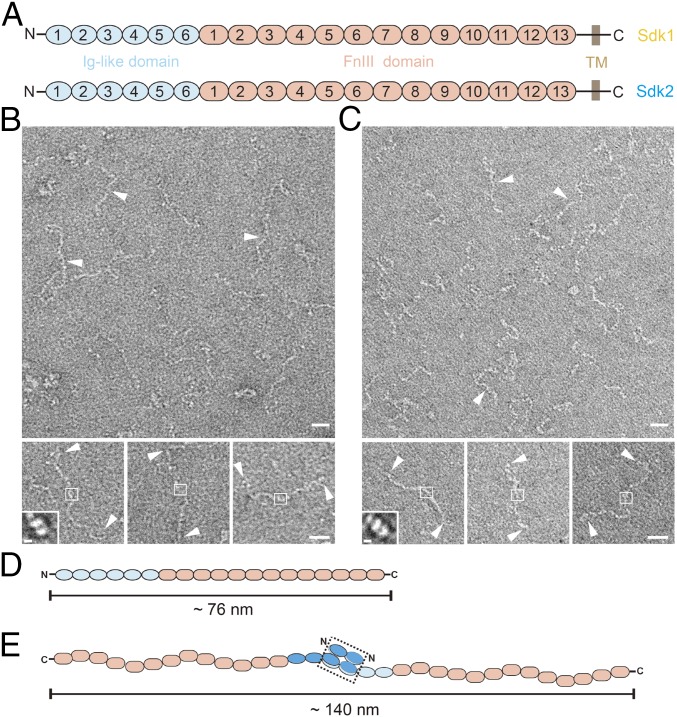Fig. 1.
The ectodomains of Sdk1 and Sdk2 form homophilic dimers with flexible conformations. (A) Domain organization of Sdk1 and Sdk2. (B) Negatively stained EM images of Sdk1 ectodomain (white arrowheads, Upper) and the selected Sdk1 particles (white arrowheads, Lower) as homophilic dimers with flexible conformations. The potential dimeric heads of Sdk1 are shown in white squares. A 2D class averaged image of Sdk1 dimeric head is shown in Inset. (C) Negatively stained EM images of Sdk2 ectodomain (white arrowheads, Upper) and the selected Sdk2 particles (white arrowheads, Lower) as homophilic dimers with flexible conformations. The potential dimeric heads of Sdk2 are shown in white squares. A 2D class averaged image of Sdk2 dimeric head is shown in Inset. (D) A schematic model of the extended Sdk ectodomain. (E) A schematic model of the extended Sdk homophilic dimer. The dimerized horseshoe heads are shown in a black dashed rectangle. (Scale bars: B and C, 20 nm; B and C, Insets, 5 nm.)

